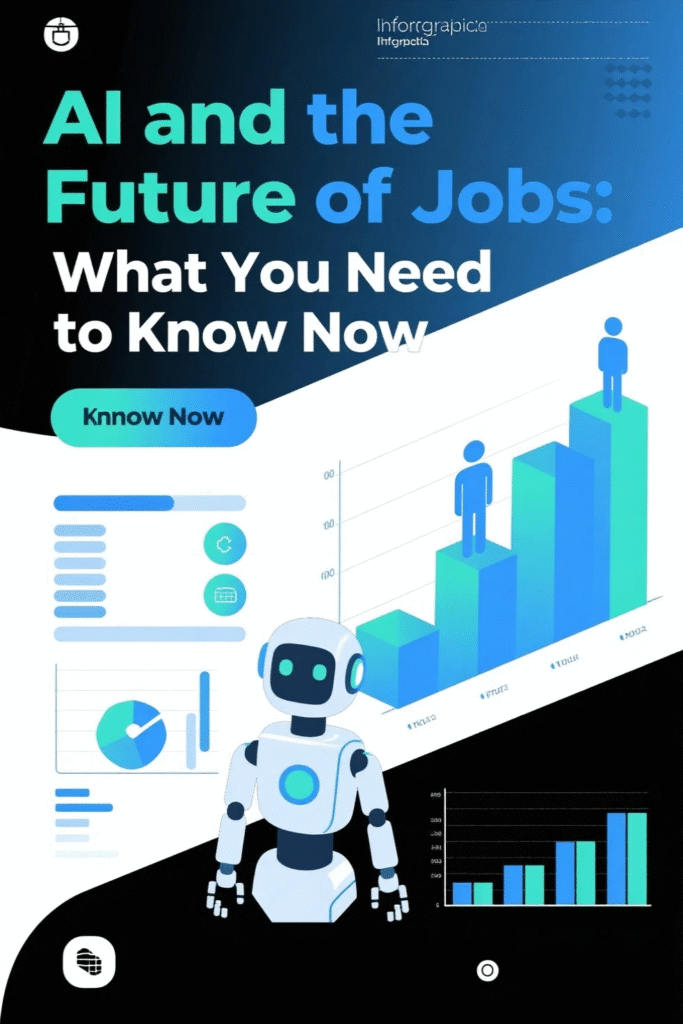Discover the Origins of Labor Day and the First Labor Day
Labor Day is a big part of American life. It means summer is over and fall is here. But, it started with the labor movement in the late 1800s.
The first Labor Day was to thank American workers. It was a big moment in history. It showed how much workers were valued.

The story of Labor Day is about hard work and never giving up. Workers wanted better jobs, fair pay, and shorter hours.
Key Takeaways
- Understanding the historical context of Labor Day
- The significance of the first Labor Day celebration
- The role of the labor movement in shaping Labor Day
- The evolution of Labor Day over time
- The cultural impact of Labor Day in America
The Historical Context of American Labor in the Late 19th Century
The late 19th century was a big change for American labor. The Industrial Revolution made work conditions worse. Many workers moved to cities for jobs in factories.
Industrial Revolution and Working Conditions
The Industrial Revolution changed the workforce a lot. Workers moved from farms to cities for factory jobs. These factories were very dangerous.
Factory Safety and Child Labor
Factory safety was a big worry. Many workers, even kids, faced dangerous working environments. Kids as young as six worked long hours in bad places.
Typical Working Hours and Wages
Workers worked long hours, over 12 hours a day, six days a week. They got low wages. There were no rules to protect them.
Rise of Labor Movements and Unions
Labor movements and unions started because of these bad conditions. They wanted better work, fair pay, and shorter hours. This was the start of a long fight for workers’ rights.
Social and Economic Landscape of the 1880s
The 1880s saw big changes in society and economy. Industries and cities grew fast. Labor movements were key in shaping the economy.
Key Figures Behind the Creation of Labor Day
Many people helped start Labor Day. They worked hard for workers’ rights. This holiday began in the late 1800s.
Peter J. McGuire and His Contributions
Peter J. McGuire was a big name in Labor Day’s start. He was a carpenter and a union leader. This helped him fight for workers.
Background as a Carpenter and Union Leader
McGuire knew a lot about carpentry and unions. He saw how hard workers’ lives were. He worked to make things better.
His Proposal for a Workers’ Holiday
In 1882, McGuire suggested a holiday for workers. Labor unions liked the idea. So, the first Labor Day was celebrated.
Matthew Maguire’s Role in Labor Day’s Establishment
Matthew Maguire helped start the first Labor Day parade in New York City. His work got people excited for the holiday.
Other Influential Labor Leaders
Other leaders, like those in the Central Labor Union, were also key. They helped make Labor Day popular all over the U.S.
| Key Figure | Contribution |
| Peter J. McGuire | Proposed the idea of Labor Day, advocated for workers’ rights |
| Matthew Maguire | Organized the first Labor Day parade in New York City |
| Central Labor Union Leaders | Supported and spread Labor Day celebrations across the U.S. |
The First Labor Day: September 5, 1882
September 5, 1882, was a big day in history. It was the first Labor Day in New York City. Labor unions and advocates worked hard to make it happen. They wanted better work conditions and to honor American workers.
The New York City Celebration
The first Labor Day was well-planned. It was held in New York City, a big industrial center. This showed how important the day was.
Location and Weather Conditions
The celebration was in many places in New York City. It was easy for workers to get there. The weather was warm, with temperatures in the 70s (°F). This made it perfect for outdoor fun.
Estimated Attendance Figures
Tens of thousands of workers joined the parade and celebrations. It was a big show of unity. The exact number is hard to know, but it was a huge success.
The Central Labor Union’s Organization
The Central Labor Union (CLU) was key in organizing the first Labor Day. The CLU included many trade unions. They planned the parade, worked with groups, and promoted the event.
Participation and Public Response
The first Labor Day was a hit. Workers and their families came out in big numbers. They enjoyed parades, picnics, and more. The event showed labor’s unity and highlighted workers’ struggles.
- Parades with banners and floats highlighting workers’ rights issues
- Speeches by labor leaders and activists
- Community gatherings and picnics
- Demonstrations advocating for better working conditions and fair wages
The first Labor Day in New York City was a success. It started a tradition that would grow. It showed the importance of labor rights and workers’ issues in America.
The Parade and Festivities of the First Labor Day
On September 5, 1882, New York City saw a historic parade. It marked the start of Labor Day celebrations. This event showed the growing strength of the labor movement in America.
Route and Procession Details
The parade route was planned to be seen by many. It started at City Hall and went up Broadway. Many people came to show their support for workers.

Banners, Music, and Symbolism
The parade showed unity with banners and insignias for different trades. The music was important too. It told the story of workers’ struggles and hopes.
Union Insignias and Emblems
The symbols in the parade meant more than just looks. They showed the unity and strength of workers. These symbols were on banners and flags carried by marchers.
Songs and Chants of the Day
The songs and chants were key to the parade. They showed unity and solidarity. They helped unite the movement and create a community feeling.
| Symbol | Meaning |
| Union Insignias | Represented unity and collective strength |
| Labor Emblems | Signified solidarity among different trades |
| Flags and Banners | Displayed pride and identity |
Post-Parade Celebrations
After the parade, people came together for picnics and other festivities. These celebrations ended the day of labor movement achievements. They brought people together, showing unity and purpose.
“The first Labor Day parade was a resounding success, not just in terms of the numbers that participated, but in the spirit of unity and determination it embodied.”
The first Labor Day parade set a good example for future celebrations. It started a tradition that would grow and change over time.
Spreading Across America: Early Labor Day Celebrations
The first Labor Day in New York City started a big movement. More cities and states started to celebrate it too.
Not all states joined Labor Day at the same time. Oregon was one of the first to say yes to Labor Day.
Oregon’s Early Adoption
Oregon was ahead in supporting Labor Day. This showed they cared about workers’ rights a lot.
State-by-State Recognition
States took different times to accept Labor Day. By the early 1900s, most states said yes to Labor Day. This showed everyone agreed it was important.
A list of key states and their adoption years includes:
- Oregon: One of the first states to adopt Labor Day
- New York: The initial state where Labor Day was first celebrated
- Other states: Gradually adopted Labor Day over the next decade
Regional Variations in Celebrations
Even though Labor Day was the same everywhere, celebrations were different. Some had parades and rallies. Others had festivals and family fun.
These early celebrations helped shape today’s Labor Day. They showed the diversity and unity of the American labor movement.
The Pullman Strike and Its Impact on Labor Day Legislation
The Pullman Strike of 1894 was a big deal in American labor history. It showed the labor problems of the time. It also helped shape labor laws.
Origins and Events of the Pullman Strike
The Pullman Strike started because of bad working conditions and unfair practices at the Pullman Palace Car Company in Illinois. Workers worked long hours for little pay. They also lived in poor conditions in the company town.
Working Conditions at Pullman Palace Car Company
Workers at Pullman faced harsh working conditions. They worked long hours for low pay. The company controlled their lives, causing anger.
Strike Timeline and Key Moments
The strike started on May 11, 1894. Workers walked out in protest. It quickly got support from the American Railway Union (ARU) and over 250,000 workers across 27 states joined.
President Cleveland’s Response
President Grover Cleveland sent federal troops to Chicago. He said it was to protect the mail and keep commerce going. This move was very controversial and caused a lot of public anger.
Political Aftermath and Labor Relations
The strike’s violent end and the public’s reaction changed labor relations and laws. The Pullman Strike showed the need for better labor laws. It helped make Labor Day a federal holiday.

| Aspect | Before Pullman Strike | After Pullman Strike |
|---|---|---|
| Labor Laws | Minimal federal regulation | Increased calls for legislation |
| Public Perception | Labor issues seen as local | National awareness of labor rights |
| Union Activity | Growing union membership | Significant increase in union organizing |
| Government Response | Limited intervention | Federal intervention in labor disputes |
Labor Day Becomes a Federal Holiday in 1894
1894 was a big year for workers in the United States. Labor Day became a federal holiday. This was after many years of states celebrating and workers fighting for one day together.
Congressional Debates and Passage
The journey to make Labor Day a national holiday was hard. Congressional debates were long and tough. But, the bill finally passed Congress and was ready for the president’s sign.
President Cleveland’s Signing
On June 28, 1894, President Grover Cleveland signed the bill. This made Labor Day a federal holiday. It was a big step for workers and brought the country together.
Public and Media Reaction
Most people were happy about Labor Day becoming a holiday. They saw it as a win for workers’ rights. News and editorials talked about the importance of this day.
Labor Day becoming a federal holiday in 1894 was a big moment. It showed the value of workers’ hard work and rights.
Labor Day the First: Comparing Original Celebrations to Modern Observances
The first Labor Day was on September 5, 1882. It started a tradition that has changed a lot. It was a day for workers to celebrate their hard work.
Today, Labor Day has changed a lot. We see changes in its purpose, activities, and the labor movement’s role.
Changes in Purpose and Meaning
At first, Labor Day honored the working class. The labor movement was at the forefront, fighting for better work conditions. Now, it’s also about the end of summer and sales.
The original purpose was about labor rights and solidarity. Today, it’s more about the end of summer and back to school.
Shifts in Activities and Traditions
The first Labor Day had a parade and festivities in New York City. Modern celebrations are more about fun like barbecues and shopping. Parades and labor events are not as common now.
- Original activities included parades, speeches, and picnics.
- Modern activities often involve sales events, outdoor recreational activities, and family gatherings.
- The role of labor unions in organizing events has diminished over time.
Labor Movement’s Changing Role
The labor movement was key in starting Labor Day. Today, the movement continues to advocate for workers’ rights. But, its influence and membership have changed.
Despite changes, Labor Day is still important. It honors the labor movement’s achievements and reminds us of the fight for fair labor.
In conclusion, Labor Day has changed a lot since 1882. It went from celebrating workers’ rights to a cultural event. It shows how American values and priorities have evolved.
Evolution of Labor Day Celebrations Through the 20th Century
The 20th century changed Labor Day a lot. It started as a day for workers to speak up. Now, it’s a big community event.
From Rallies to Festivals
At first, Labor Day was about political rallies. Workers showed their rights issues. But, it changed to fun community events over time.
Parades and picnics became common. Now, it’s all about family fun, not just work issues.
Depression Era and Wartime Observances
The Great Depression made Labor Day sad. Many talked about worker hardships. Economic relief and job creation were big topics.
World War II made Labor Day about patriotism. Workers helped with the war effort.
Post-War Commercialization
After the war, Labor Day got more commercial. Retailers started promoting end-of-summer sales. It became about travel, fun, and school shopping.
This change got some criticism. But it showed America’s growing wealth and changing values.
Through all these changes, Labor Day stayed important. It shows how labor rights, community, and business mix together.
International Workers’ Day vs. American Labor Day
Many countries celebrate International Workers’ Day on May 1st. But, the United States has Labor Day on a different day. This shows how different labor traditions are around the world.
The start of International Workers’ Day is linked to the Haymarket Affair in Chicago in 1886. This event was a key moment in the fight for workers’ rights everywhere.
May Day Origins and the Haymarket Affair
The Haymarket Affair started as a peaceful protest on May 4, 1886, in Chicago’s Haymarket Square. Things turned violent when a bomb was thrown at the police. This led to the deaths of several officers and civilians.
Even though the chaos was big and the bombers were not found, it changed the labor movement worldwide.

Why America Celebrates Differently
The U.S. didn’t pick May 1st for Labor Day. This was because of the political tensions and the link to radical labor and socialism. Instead, Labor Day is on the first Monday in September. This date was chosen to not be on the same day as May Day.
Global Labor Solidarity Movements
Even though the dates are different, the message of worker solidarity is the same. Labor movements all over the world fight for workers’ rights, fair pay, and safe jobs. This shows a shared goal to better workers’ lives everywhere.
The U.S. and other countries celebrating on different days shows the complex nature of labor movements. But, the core idea of honoring workers’ contributions is something everyone agrees on.
British Bank Holidays and American Labor Day: A Comparison
British Bank Holidays and American Labor Day both give workers a day off. But they are very different.
The UK’s August Bank Holiday
The UK’s August Bank Holiday is rooted in tradition. It gives workers a much-needed summer break.
It’s celebrated on the last Monday in August in England, Wales, and Northern Ireland. In Scotland, it’s on the first Monday in August.
British Labor Movement Celebrations
The August Bank Holiday isn’t just for the labor movement. But it’s a big part of British culture. It lets workers enjoy leisure activities.
The UK’s labor movement has its own history. It celebrates on May 1st, known as International Workers’ Day.
Cultural Exchange and Differences
British Bank Holidays and American Labor Day show the culture and history of their countries.
American Labor Day honors the labor movement’s wins. But UK Bank Holidays are mainly for a break.
| Holiday | Date | Purpose |
|---|---|---|
| American Labor Day | First Monday in September | Celebrates labor movement achievements |
| UK August Bank Holiday | Last Monday in August (England, Wales, Northern Ireland), First Monday in August (Scotland) | Provides a summer break for workers |
The Legacy of the First Labor Day on Workers’ Rights
The first Labor Day was more than a party. It was a big step for workers’ rights. It helped bring about big changes in labor laws.
Labor Legislation Following the Holiday’s Establishment
Labor Day started a new chapter in labor laws. It led to big changes in work hours and safety.
The Eight-Hour Workday Campaign
The fight for an eight-hour workday was key. Workers wanted shorter days for better health and life. This push led to laws that set work hours.
Workplace Safety Reforms
Workplace safety was another big area of change. The Industrial Revolution showed how dangerous jobs were. Labor Day reminded everyone of the need for safer work places.
Union Membership Trends Over Time
Union membership has changed over the years. It grew as workers united for better conditions. But, it has gone up and down due to the economy and laws.
Modern Labor Challenges and Achievements
Today, the labor movement faces new issues. These include low wages, harassment, and rights for gig workers. But, there have been wins like better worker protections.

Labor Day’s first celebration has had a lasting impact. It has shaped labor laws and the movement. Celebrating Labor Day reminds us of its importance and the ongoing fight for workers’ rights.
Conclusion: Honoring the Spirit of Labor Day Today
Looking back, Labor Day’s roots are deep in American history. It started in the late 1800s and grew into a federal holiday. Today, it celebrates the hard work of the American people.
Even though Labor Day celebrations have changed, their core remains the same. It’s a day to thank workers and the labor movement. They’ve helped shape our country’s future.
In our modern world, Labor Day still inspires fights for workers’ rights. It’s a time to thank workers for their hard work. Their efforts have built our nation.
Knowing Labor Day’s history helps us value today’s celebrations. It keeps the spirit of Labor Day alive.













